|
Size: 6760
Comment:
|
Size: 6804
Comment:
|
| Deletions are marked like this. | Additions are marked like this. |
| Line 42: | Line 42: |
| {{attachment:single_node.jpg|single node|width="400"}} {{attachment:double_node.jpg|double node|width="400"}} | http://www.youtube.com/watch?v=aE_zHbpF3Bo |
| Line 44: | Line 44: |
| {{attachment:double_node2.jpg|double node again|width="400"}} {{attachment:multinode1.jpg|maybe 4 nodes?|width="400"}} | {{attachment:single_node.jpg|single node|width="400"}} {{attachment:double_node.jpg|double node|width="400"}} {{attachment:double_node2.jpg|double node again|width="400"}} {{attachment:multinode1.jpg|maybe 4 nodes?|width="400"}} |
I discovered an unusual bubble structure which is unexpectedly very stable. To make it, you blow a hemispherical bubble in a pan of soap water using a straw. Then, while still blowing through the straw, withdraw the straw from the bubble. Under the right conditions, a sausage-like corrugated tube of soap film will form between the straw and the bubble. The tube collapses when you stop blowing. Without airflow, it can be proved that long cylindrical bubbles are unstable. As far as I know, nobody has studied bubble stability with airflow. It might be possible to publish a short article about this topic.
Here's what we have for equipment:
*A baking sheet for holding the bubble solution
*Dish detergent & glycerine
*Some Tygon tubing attatched to the building air supply
*Digital camera (personal)
Things we might need:
*Distilled water
*Straight plastic or metal pipes with a wide range of diameters (1/16" up to 1" or more)
*A way of measuring the airflow rate
*A high-speed camera to capture oscillations and break-up
*A way of visualizing the airflow (source of fog, maybe some dry ice or LN2)
*A way to measure the surface tension of the solution
Observations so far:
Blowing the bubbles by hand: In order to make the longest tubes, it's necessary to have a large flow rate, enough to cause audible & visible turbulence inside the tube. It is clear that these tubes are robustly stable, since they can oscillate enough during the turbulent phase to produce sound, without breaking! I think I saw transient states with up to 4 nodes or more. When I reduced the airflow after forming the tube, the number of nodes was reduced, and the turbulence went away. This is how I captured the picture with the distinct 2-node structure.
Blowing the bubbles with the comressed air supply: Bai & I observed the same result (now with video footage! See Below!) that it is necessary to increase the flow rate to get a longer tube. We used much larger tubes this time, 3/8" to 1/2" ID compared to the straws I was using at home. It seems to be harder to get more than 3 nodes (two anti-nodes). I hypothesized that this is due to the fact that the hemispherical bubbles we are blowing into are larger, and thus have lower pressure. We checked this, and it seems easier to make long bubble-tubes early on, when the base bubble is still small. However, this may be due to the depletion of the soap film with time, so it is hard to say for sure. It would be nice to control the base pressure independently.
At low flow rate, trying to draw out the tube in order to produce the 2nd node (1st antinode) resulted in oscillations, and the bubble would eventually snap before we could reach the next state. With a single node only, reducing the airflow caused the tube between the node and the straw to get fatter than the straw, while increased airflow caused the tube to be roughly cylindrical and about the same diameter as the straw. At high flow rate, we could draw out two low-amplitude antinodes; reducing the flow rate at this point made the structure revert to a single fatter antinode, as I observed before. Oscillating the flow up and down allowed the antinode to shrink and expand repeatedly; moving the straw closer & farther away caused the tube to vanish and re-form with the same structure (single node, low flow rate).
A common feature is the tight neck where the tube enters the base bubble. It would be interesting to see if the diameter of this neck changed with airflow rate. It appears to always be as small or smaller than the straw. At high airflow, it is not much, if any, smaller than the rest of the bubble tube.
It is possible to blow at a tangential angle without popping the bubble; in fact, the bubble tube can execute a 90-degree turn!
Pictures & Videos
http://www.youtube.com/watch?v=aE_zHbpF3Bo
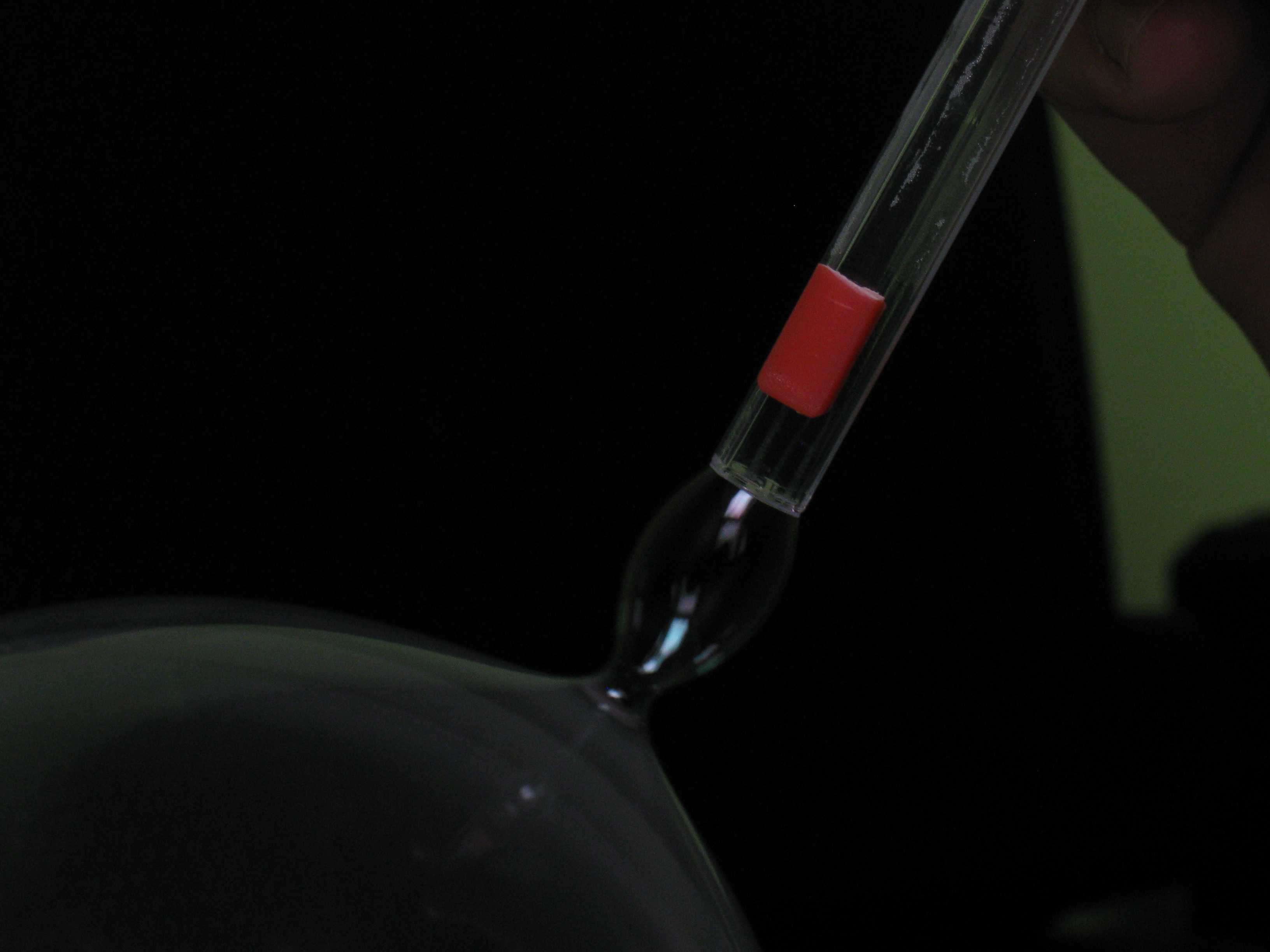
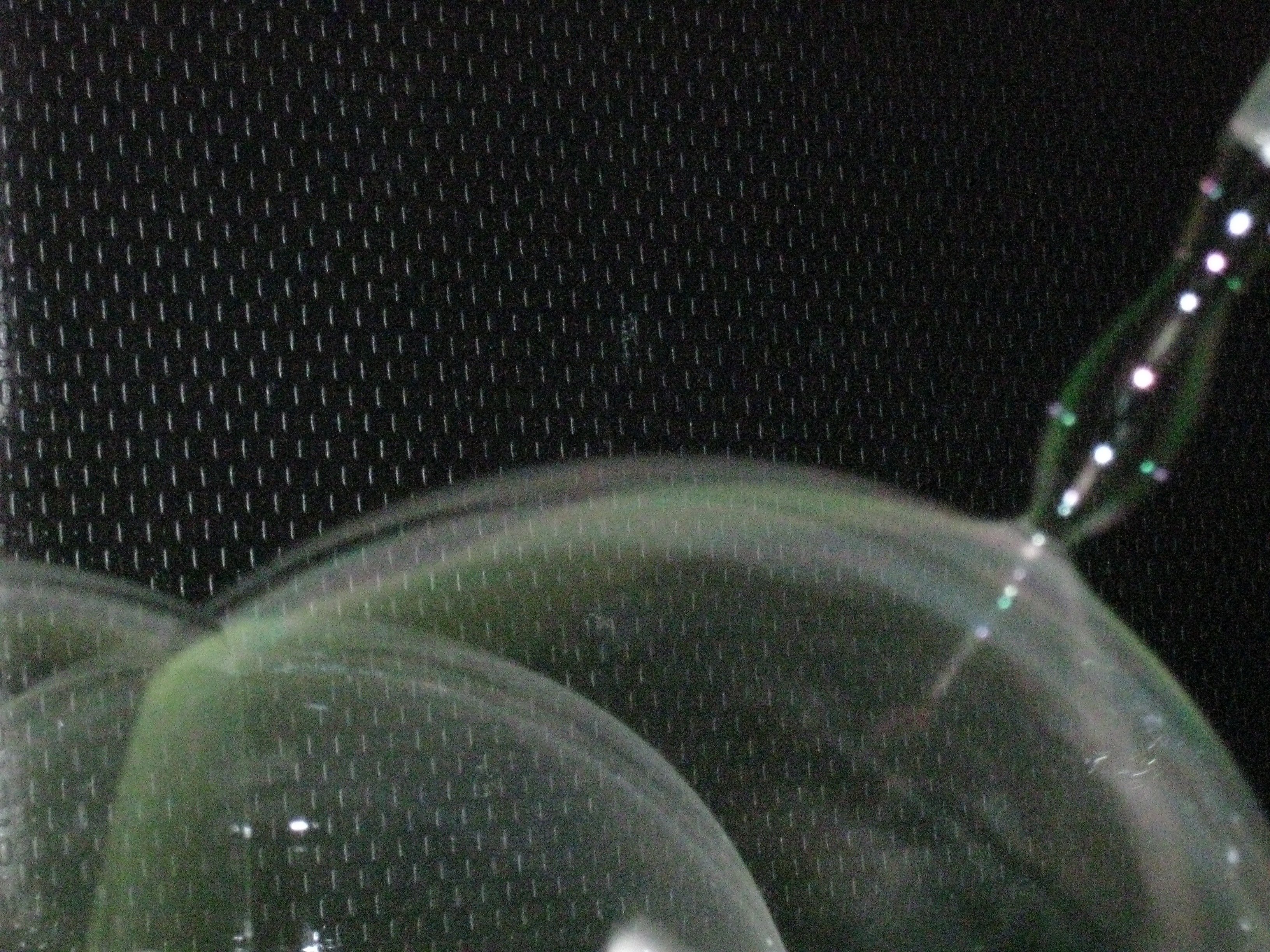
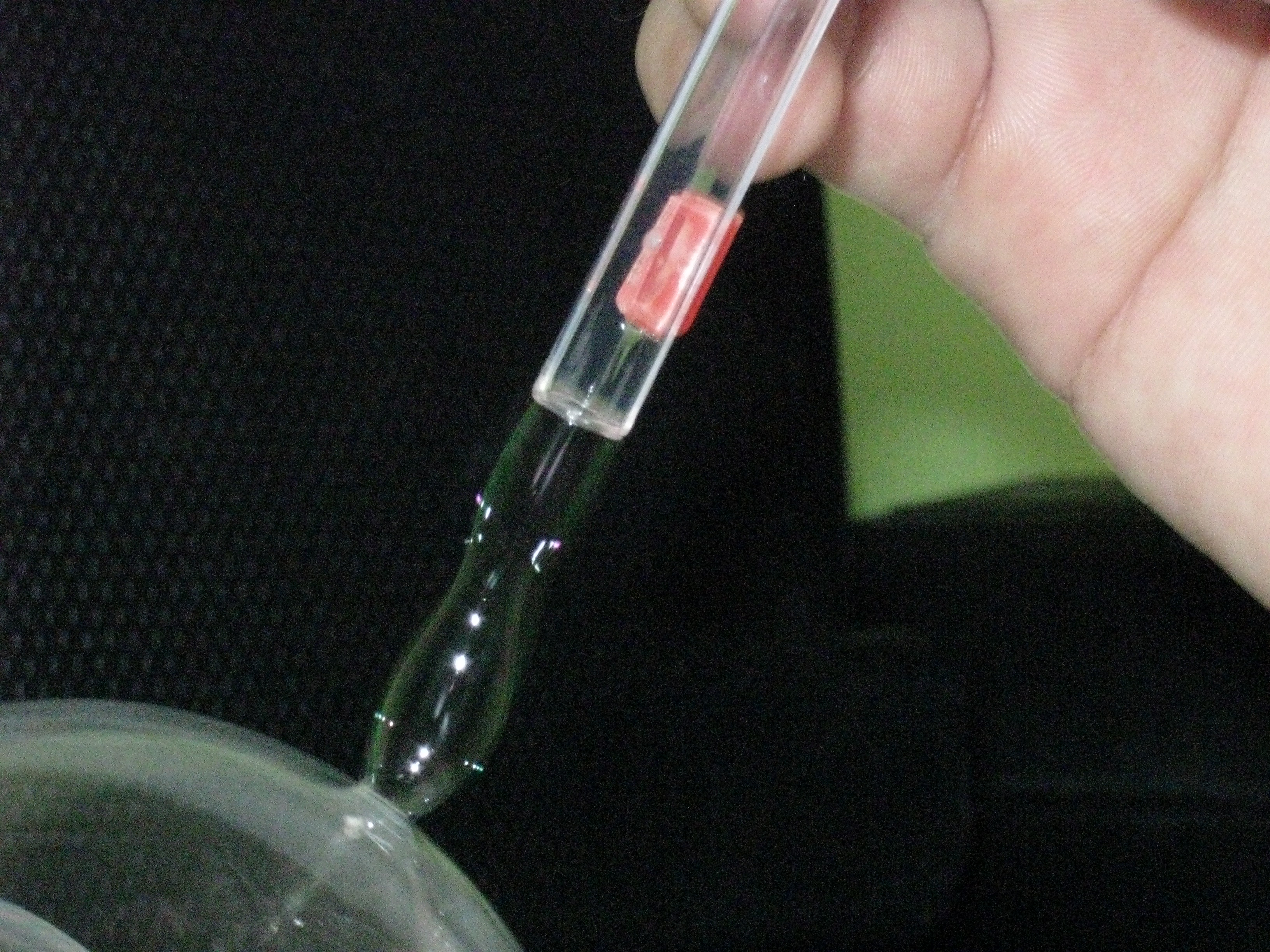
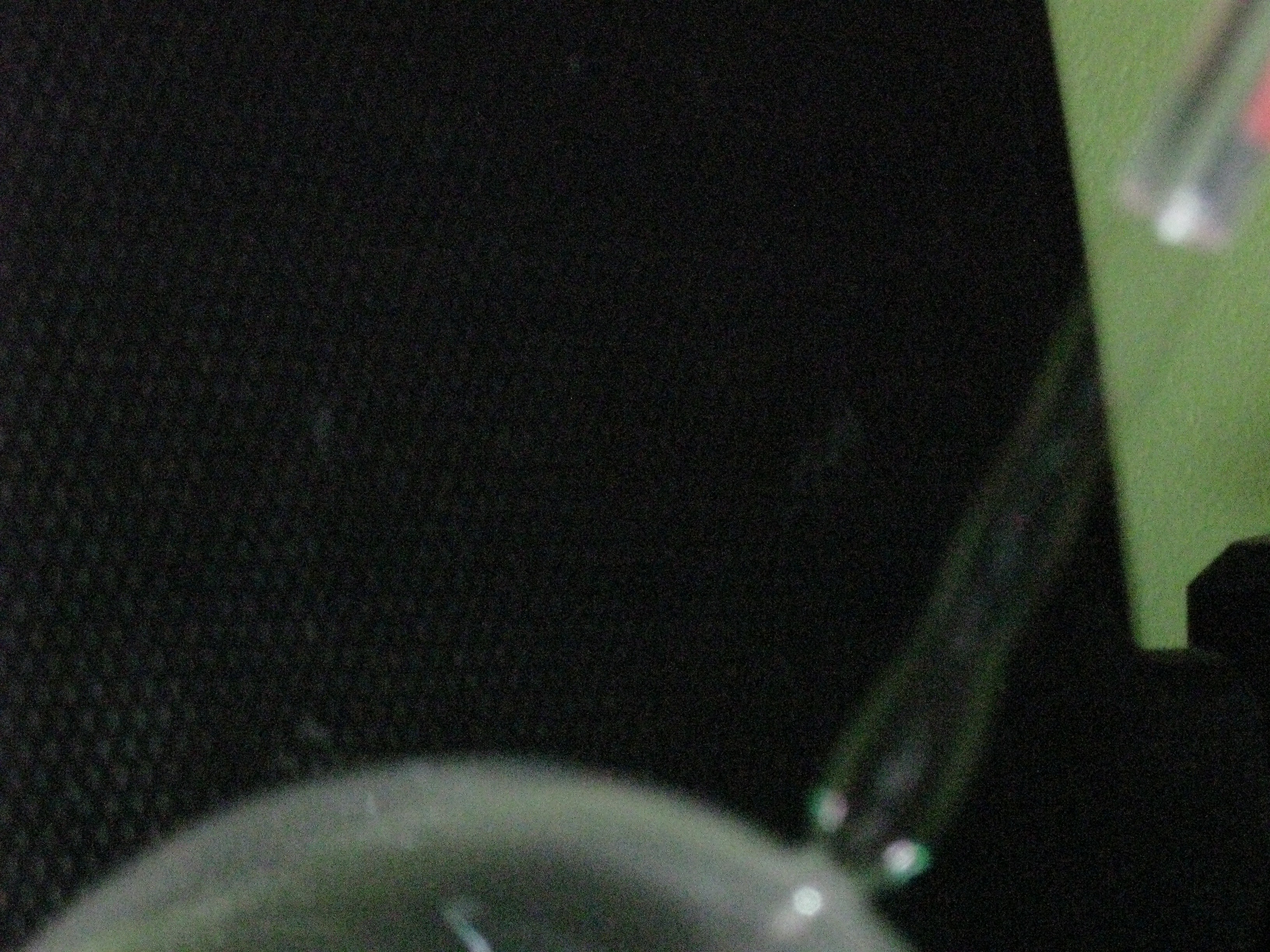
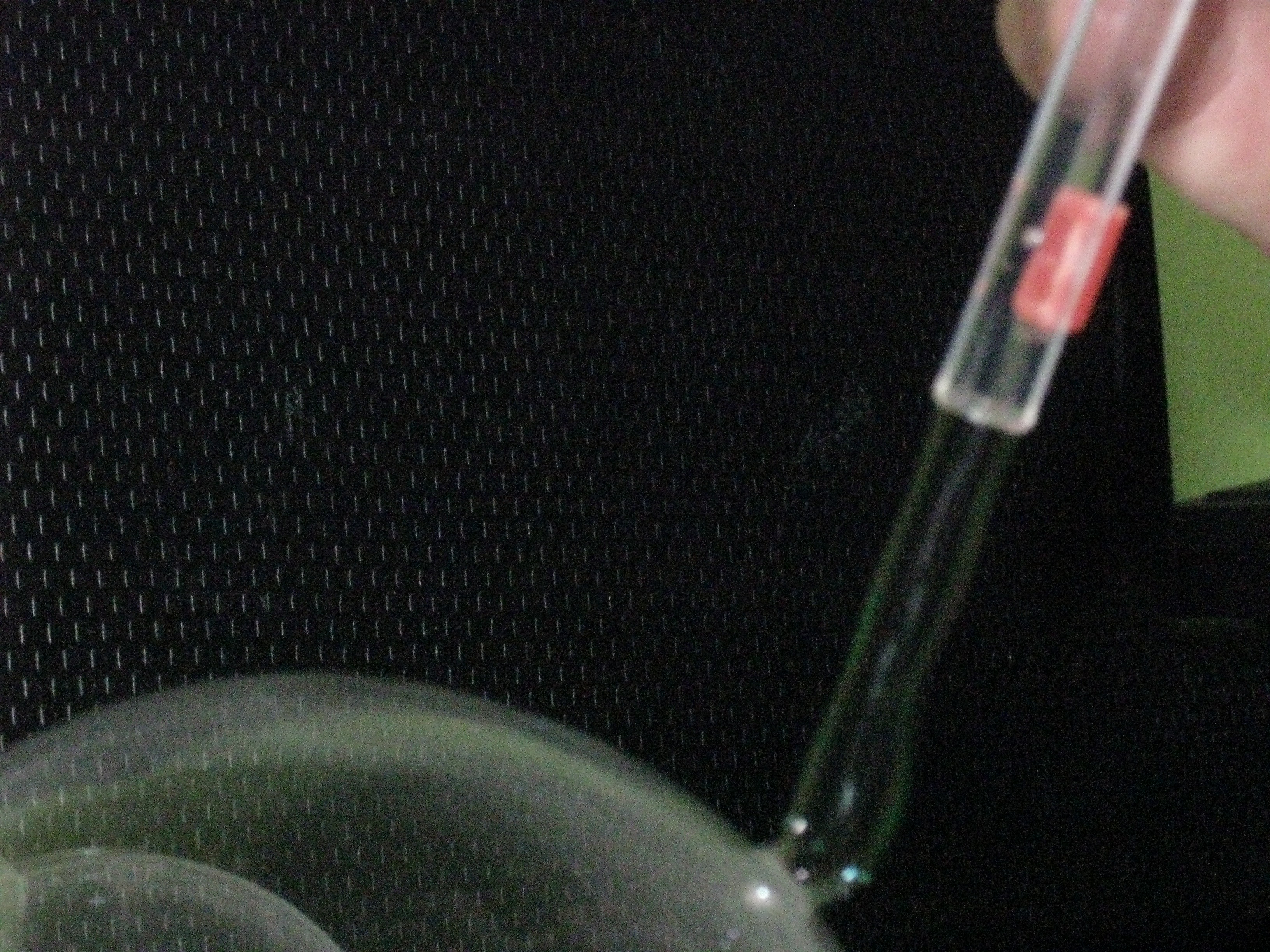
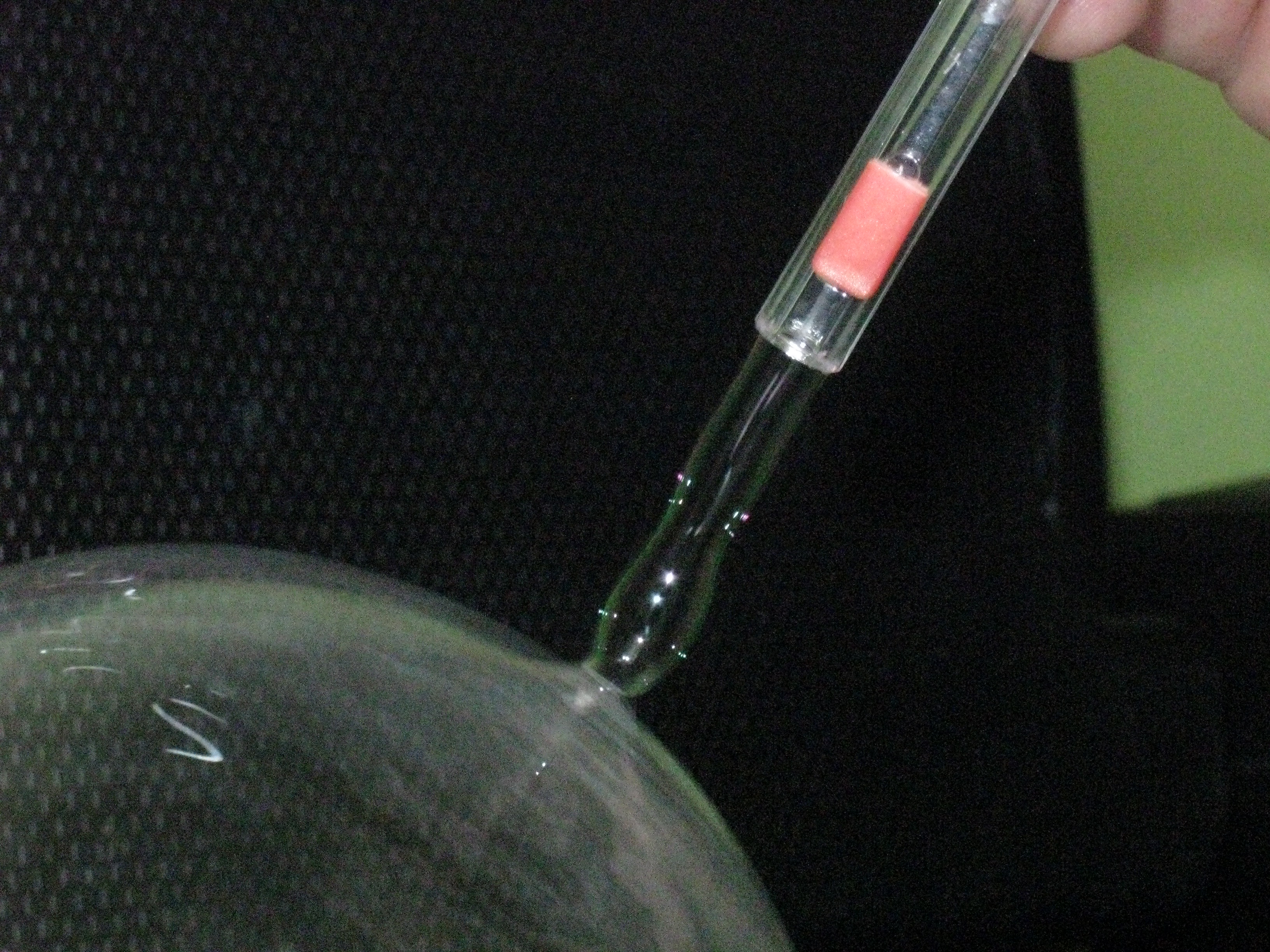
Theory:
Unduloid: a surface with constant mean curvature; they are solutions to the force balance for the case of constant pressure. They look alot like the bubble tubes we're blowing.
Wikipedia has a nice diagram: http://en.wikipedia.org/wiki/Unduloid
Mathematical formula for the unduloid is here: http://www.emis.de/journals/AM/07-5/mladenov.pdf
Description of stability of various forms including unduloids: http://www.math.ucla.edu/~bertozzi/papers/surfdiff98.pdf
Bubble Stability Without Flow: This is what happens without flow. These papers illustrate different techniques for solving the problem.
Analysis of Instability of a Cylindrical Soap Film of Finite Dimensions.http://dx.doi.org/10.1021/la970595k
Stability of interfaces of revolution with constant surface tension—the case of the catenoid. http://dx.doi.org/10.1016/0300-9467(70)85003-1
Stability and oscillations of a soap film: An analytic treatment. http://dx.doi.org/10.1119/1.12506
Good treatment of variational method for bubbles: http://farside.ph.utexas.edu/teaching/336l/fluidhtml/node51.html
Plateau-Rayleigh Instability: This is why a falling stream of water breaks into droplets. It bears some similarity to what we're doing here.
Wikipedia has a nice introduction: http://en.wikipedia.org/wiki/Plateau%E2%80%93Rayleigh_instability
On the breakup of viscous liquid thread. http://dx.doi.org/10.1063/1.868540
Nonlinear dynamics and breakup of free-surface flows. http://dx.doi.org/10.1103/RevModPhys.69.865
Lecture notes on surface tension, ch 5. web.mit.edu/1.63/www/Lec-notes/Surfacetension/Lecture5.pdf
Add your name here if you'd like to become involved with the project:
* Lucas Morton
* Bai Yang Wang
* Duncan Carlsmith
Hey Lucas, here is a video of using a speaker to wiggle water. Maybe it will inspire. -duncan
http://www.creativeplanetnetwork.com/dv/news/watch-amazing-video-sound-waves-appearing-water/62003
More inspiration
Engineers explain physics of fluids over 100 years after original discovery,